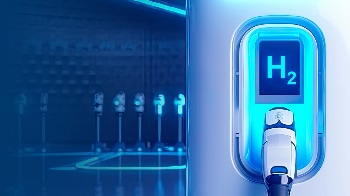Welcome to #DelphiTalks!
Interview no.2
In this interview, Carl Lester, Braking Global Product Line Manager, discusses the impact of market trends on developing new braking aftermarket products. He highlights the importance of integrating modern technologies, complying with regulatory standards like Euro7, and exceeding customer expectations through constant feedback.
Read the full interview to gain deeper insights into how Carl and his team are driving innovation and excellence in the braking industry.
Carl, tell us what role do market trends play in your decision-making process when developing new braking aftermarket products?
Market trends are driven by OE manufacturers, regulatory authorities, and customers. We must integrate modern technologies from OE manufacturers into the aftermarket. Regulatory authorities, like the United Nations Transport sector, are pushing for cleaner standards with upcoming regulations like Euro7, which will measure and regulate brake particle emissions. We aim to develop programs that not only comply with these regulations but exceed them.
Customer feedback is crucial for our success. By maintaining constant dialogue and reviewing market feedback, our team strives to create programs that meet and exceed customer expectations. We continuously review and adapt our offerings to stay ahead in a dynamic market.

How do you ensure that aftermarket products meet the same quality standards as original equipment?
We conduct rigorous testing both internally and externally on dynamometers and through real-world vehicle tests to ensure our products match or outperform OE standards. Third-party external testing is essential for fair and accurate results. If we identify areas for improvement, we implement the necessary changes.
What are the key challenges you face when developing new products, and how do you overcome them?
Speed to market is imperative for friction braking products, as wear begins as soon as a new vehicle is used. Ensuring high-quality products are ready quickly is pivotal. Rapid testing and regulatory certification are challenging, but our dynamic and efficient team excels in this area. This efficiency has led to nearly 50 first-to-market braking products in just 6 months in 2024.
... and in what ways do you drive innovation to stay ahead of the competition?
We collaborate closely with OES suppliers, regularly visiting their production, testing, and R&D facilities. By combining our technologies with market research, we gauge where trends are heading. Bringing together some of the industry's greatest and most experienced minds in meetings sparks brilliant ideas.
Can you discuss any specific examples of product improvements you have implemented that have exceeded the performance of the original equipment?
Market analysis shows that noise has become the leading factor in brake product returns, especially with quieter vehicles like EVs. Many factors can cause noise issues, but we take every precaution to combat future complaints. We recently updated our Global Technical Regulation (GTR) for all new brake pads to include a high-quality shim, even if the OE does not. Using market feedback, we make internal decisions to enhance our products, providing customers with a better and safer braking experience.
Looking to the future, what trends do you see shaping the braking industry, and how are you preparing to meet those challenges?
With the introduction of Euro7, we must closely monitor new emission requirements and ensure we conform to them. We have already conducted extensive third-party, real-world testing against competitor brands and OE pads to assess our current emission levels. These positive results also highlighted areas for improvement which we are addressing. In an ever-changing market, we must adapt and evolve together.
Thanks Carl!
Interested in more #DelphiTalks? Explore expert insights and industry perspectives from our team
- Optimizing Aftermarket Logistics - Insights from Anthony Emery
- Harnessing Digital Excellence - Insights from Agnieszka Zacharska
- Boosting Sales While Maintaining Quality and Profitability – Insights from Piotr Podrażka






